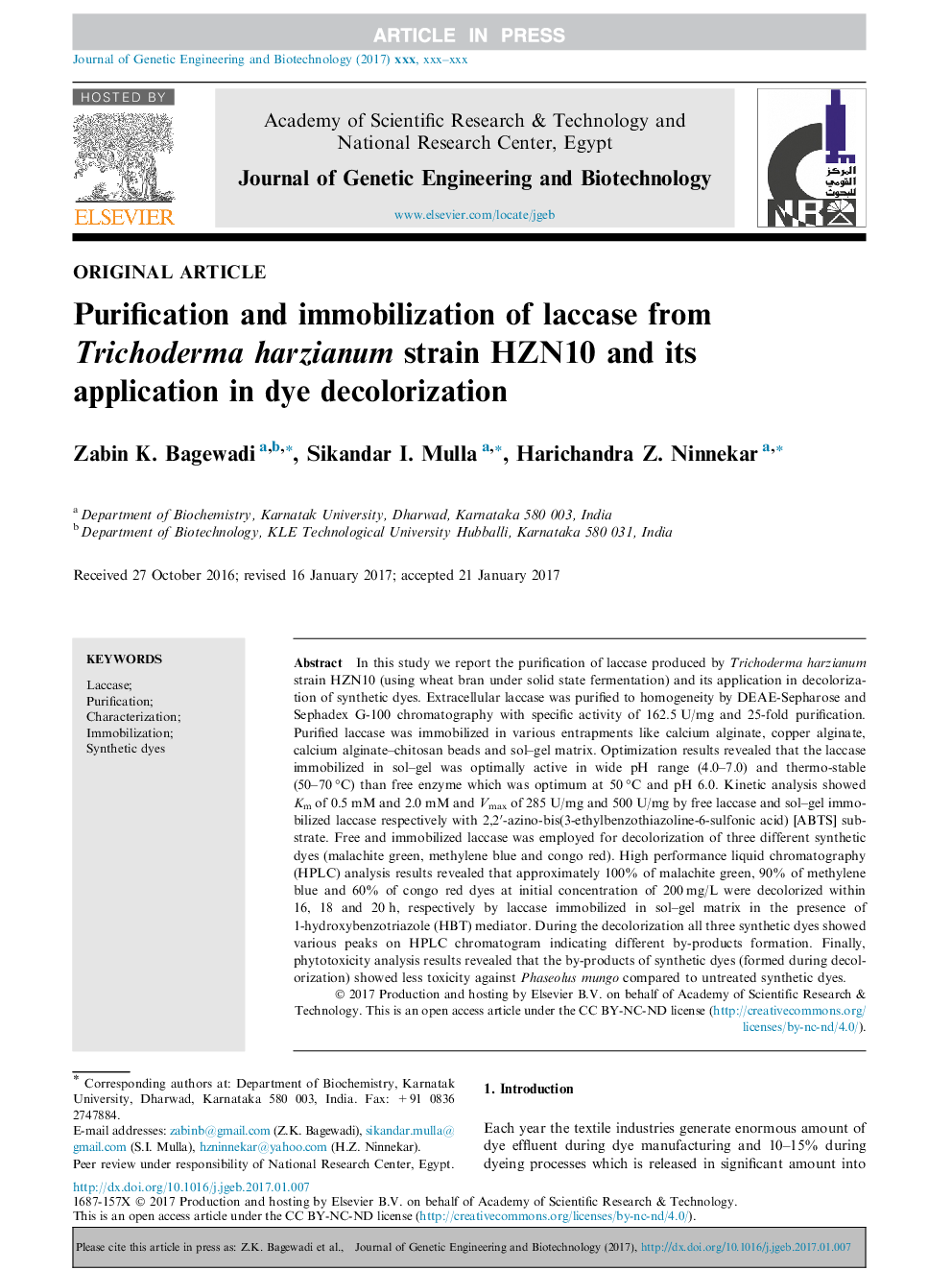| Article ID | Journal | Published Year | Pages | File Type |
|---|---|---|---|---|
| 8416485 | Journal of Genetic Engineering and Biotechnology | 2017 | 12 Pages |
Abstract
In this study we report the purification of laccase produced by Trichoderma harzianum strain HZN10 (using wheat bran under solid state fermentation) and its application in decolorization of synthetic dyes. Extracellular laccase was purified to homogeneity by DEAE-Sepharose and Sephadex G-100 chromatography with specific activity of 162.5 U/mg and 25-fold purification. Purified laccase was immobilized in various entrapments like calcium alginate, copper alginate, calcium alginate-chitosan beads and sol-gel matrix. Optimization results revealed that the laccase immobilized in sol-gel was optimally active in wide pH range (4.0-7.0) and thermo-stable (50-70 °C) than free enzyme which was optimum at 50 °C and pH 6.0. Kinetic analysis showed Km of 0.5 mM and 2.0 mM and Vmax of 285 U/mg and 500 U/mg by free laccase and sol-gel immobilized laccase respectively with 2,2â²-azino-bis(3-ethylbenzothiazoline-6-sulfonic acid) [ABTS] substrate. Free and immobilized laccase was employed for decolorization of three different synthetic dyes (malachite green, methylene blue and congo red). High performance liquid chromatography (HPLC) analysis results revealed that approximately 100% of malachite green, 90% of methylene blue and 60% of congo red dyes at initial concentration of 200 mg/L were decolorized within 16, 18 and 20 h, respectively by laccase immobilized in sol-gel matrix in the presence of 1-hydroxybenzotriazole (HBT) mediator. During the decolorization all three synthetic dyes showed various peaks on HPLC chromatogram indicating different by-products formation. Finally, phytotoxicity analysis results revealed that the by-products of synthetic dyes (formed during decolorization) showed less toxicity against Phaseolus mungo compared to untreated synthetic dyes.
Related Topics
Life Sciences
Biochemistry, Genetics and Molecular Biology
Biotechnology
Authors
Zabin K. Bagewadi, Sikandar I. Mulla, Harichandra Z. Ninnekar,
